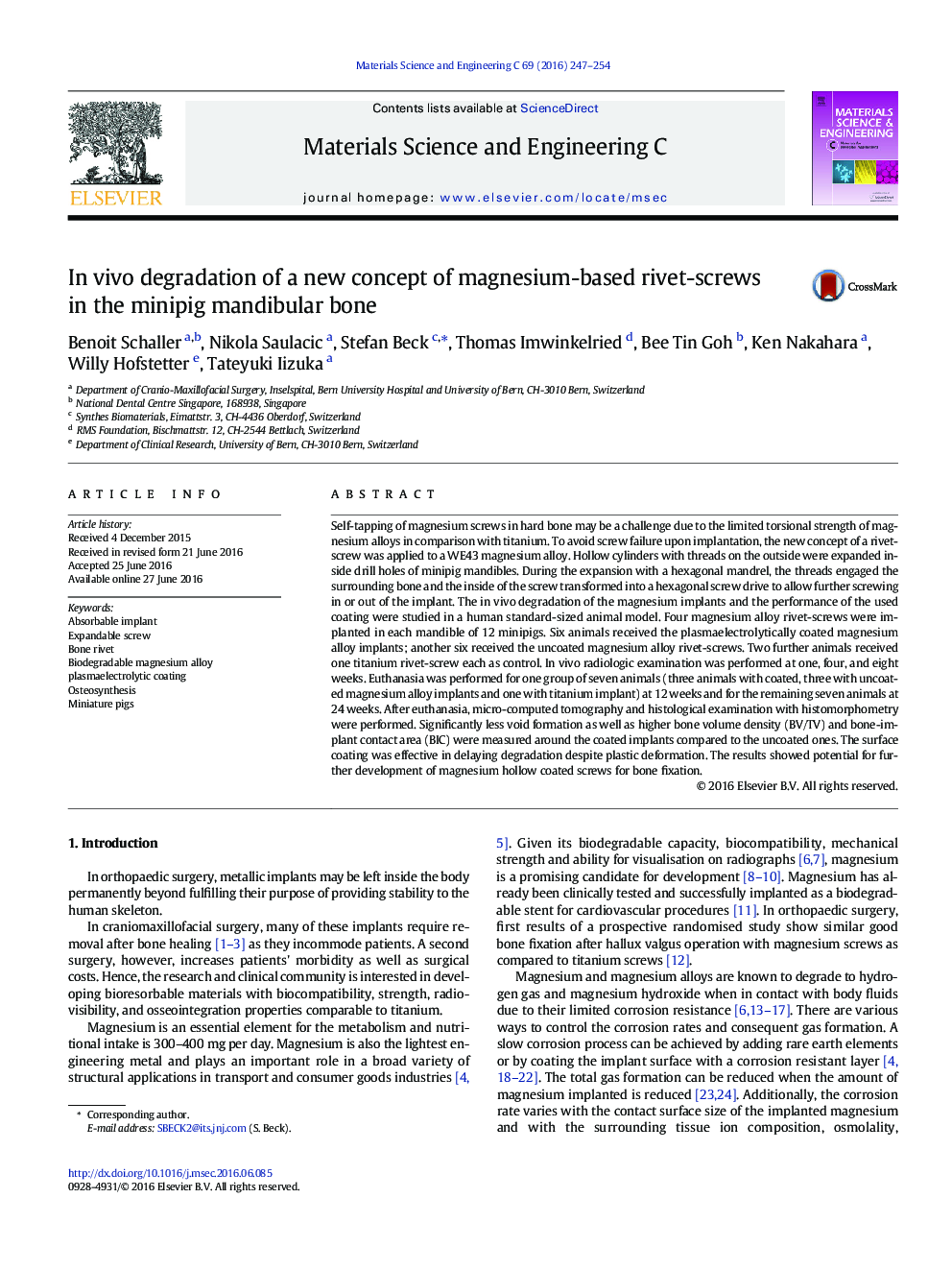| Article ID | Journal | Published Year | Pages | File Type |
|---|---|---|---|---|
| 1427850 | Materials Science and Engineering: C | 2016 | 8 Pages |
•A new concept of rivet screws as an alternative to classical screws is presented•The rivet screw concept was tested in vivo in a mini-pig pilot study•Un-coated and coated magnesium alloy implants are compared to Titanium implants•All rivet screws could be implanted fast and easy without failing•Coated magnesium rivets degraded more slowly, resulting in improved bone density
Self-tapping of magnesium screws in hard bone may be a challenge due to the limited torsional strength of magnesium alloys in comparison with titanium. To avoid screw failure upon implantation, the new concept of a rivet-screw was applied to a WE43 magnesium alloy. Hollow cylinders with threads on the outside were expanded inside drill holes of minipig mandibles. During the expansion with a hexagonal mandrel, the threads engaged the surrounding bone and the inside of the screw transformed into a hexagonal screw drive to allow further screwing in or out of the implant. The in vivo degradation of the magnesium implants and the performance of the used coating were studied in a human standard-sized animal model. Four magnesium alloy rivet-screws were implanted in each mandible of 12 minipigs. Six animals received the plasmaelectrolytically coated magnesium alloy implants; another six received the uncoated magnesium alloy rivet-screws. Two further animals received one titanium rivet-screw each as control. In vivo radiologic examination was performed at one, four, and eight weeks. Euthanasia was performed for one group of seven animals (three animals with coated, three with uncoated magnesium alloy implants and one with titanium implant) at 12 weeks and for the remaining seven animals at 24 weeks. After euthanasia, micro-computed tomography and histological examination with histomorphometry were performed. Significantly less void formation as well as higher bone volume density (BV/TV) and bone-implant contact area (BIC) were measured around the coated implants compared to the uncoated ones. The surface coating was effective in delaying degradation despite plastic deformation. The results showed potential for further development of magnesium hollow coated screws for bone fixation.
